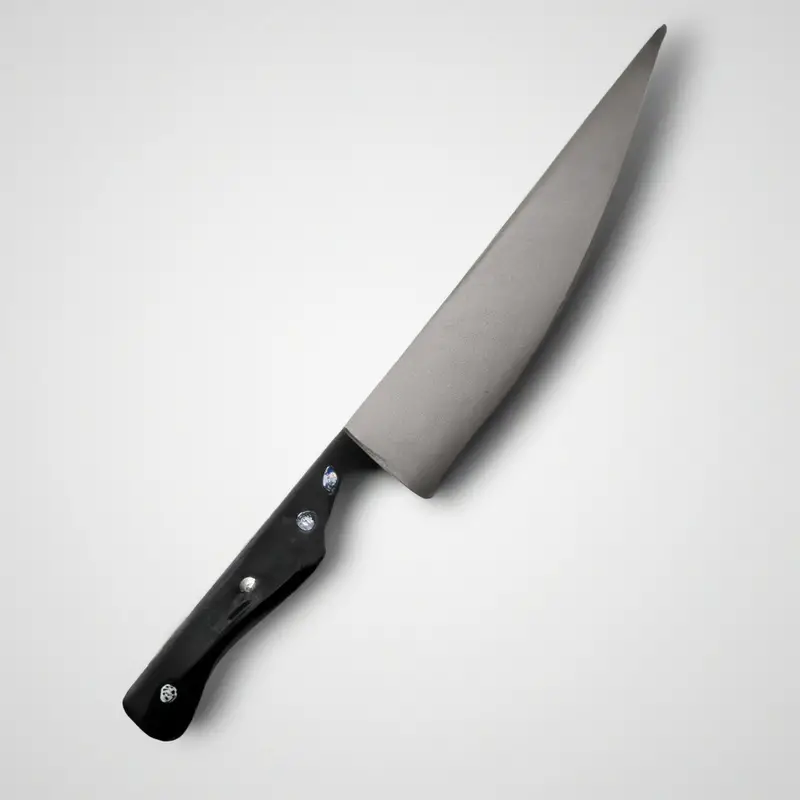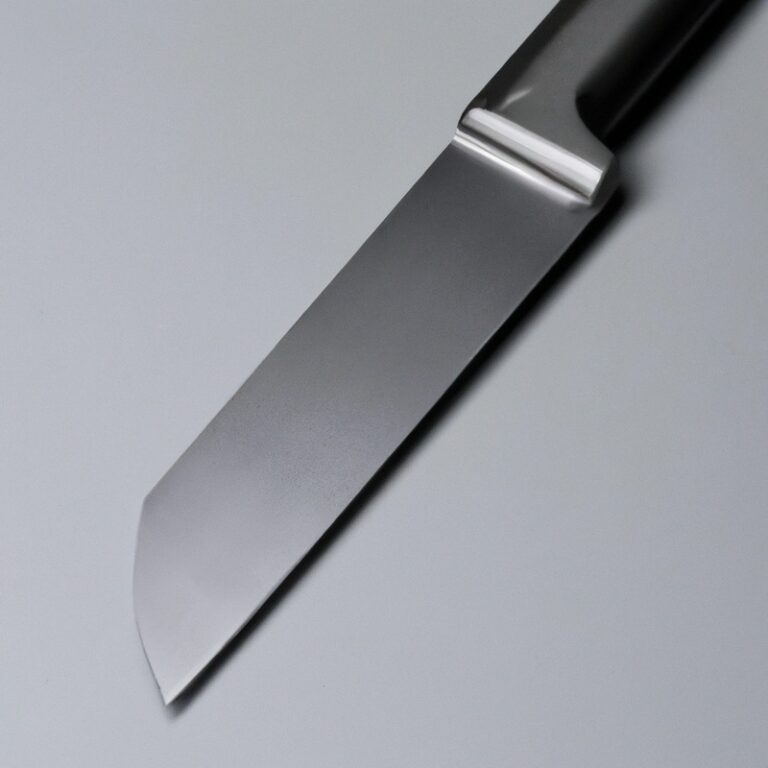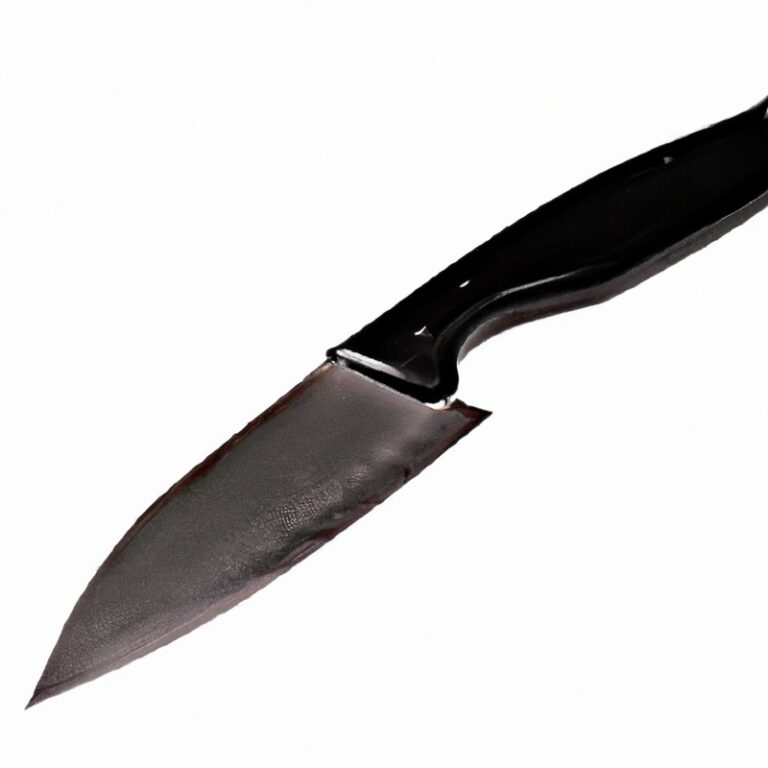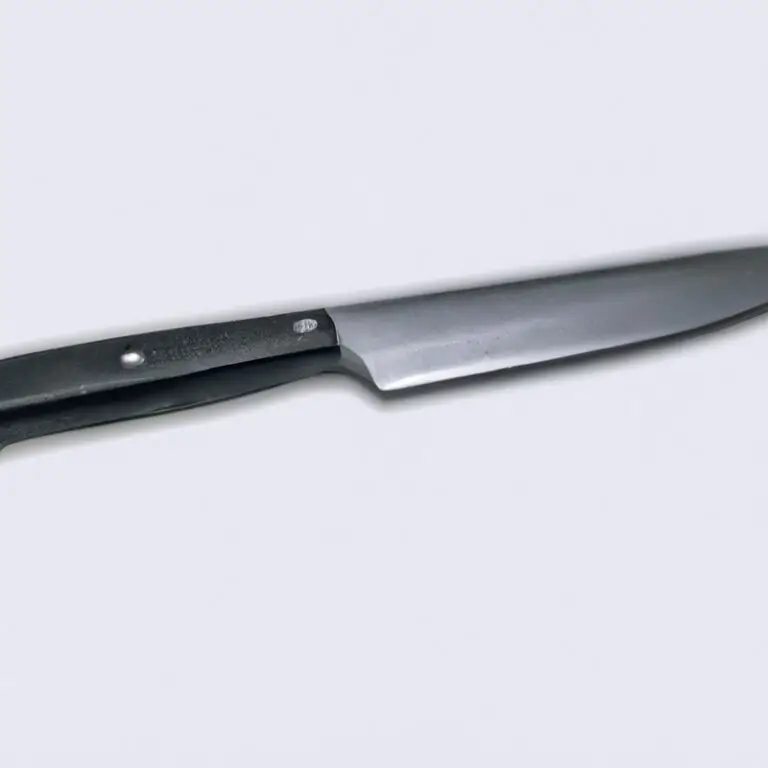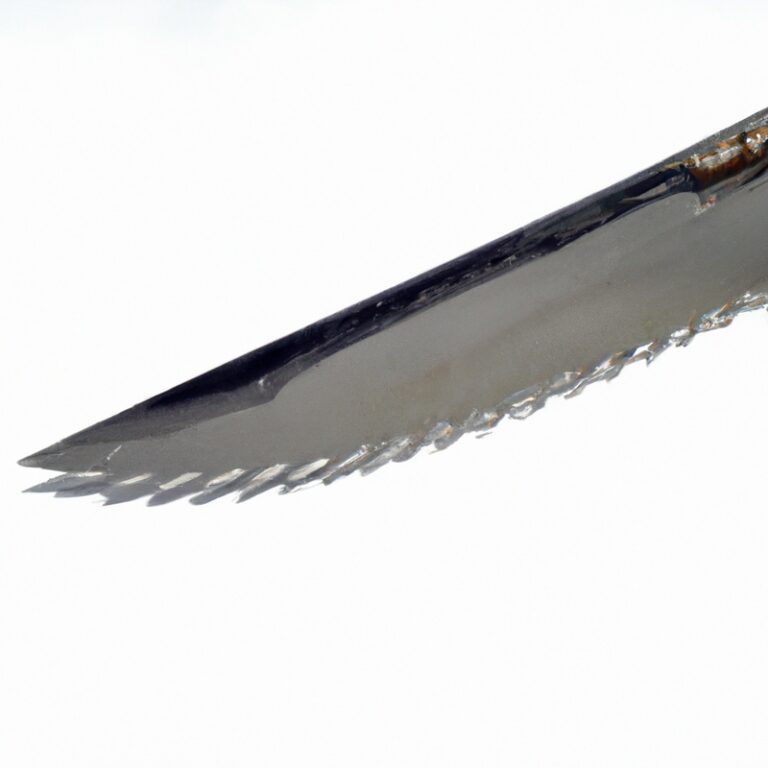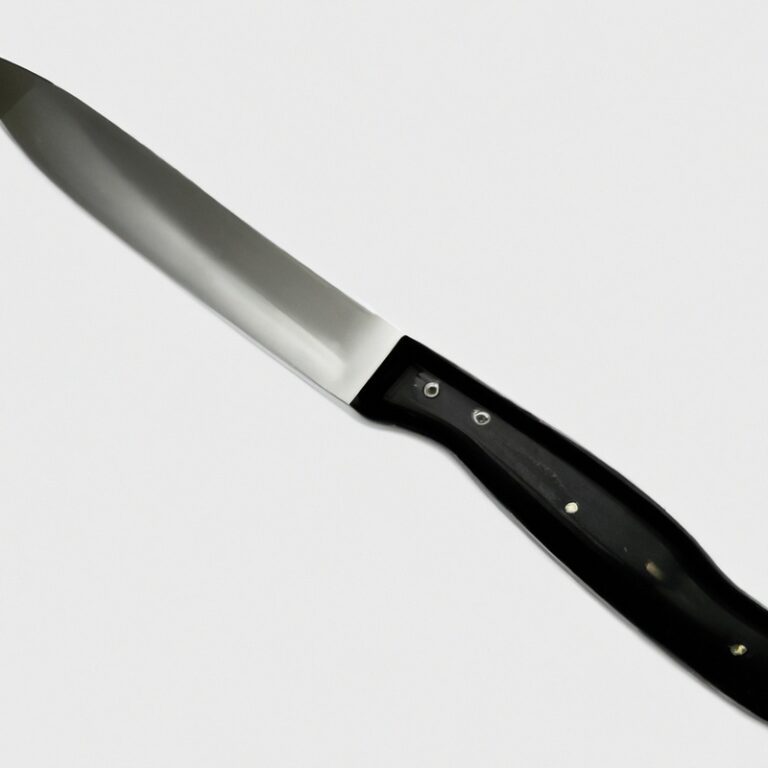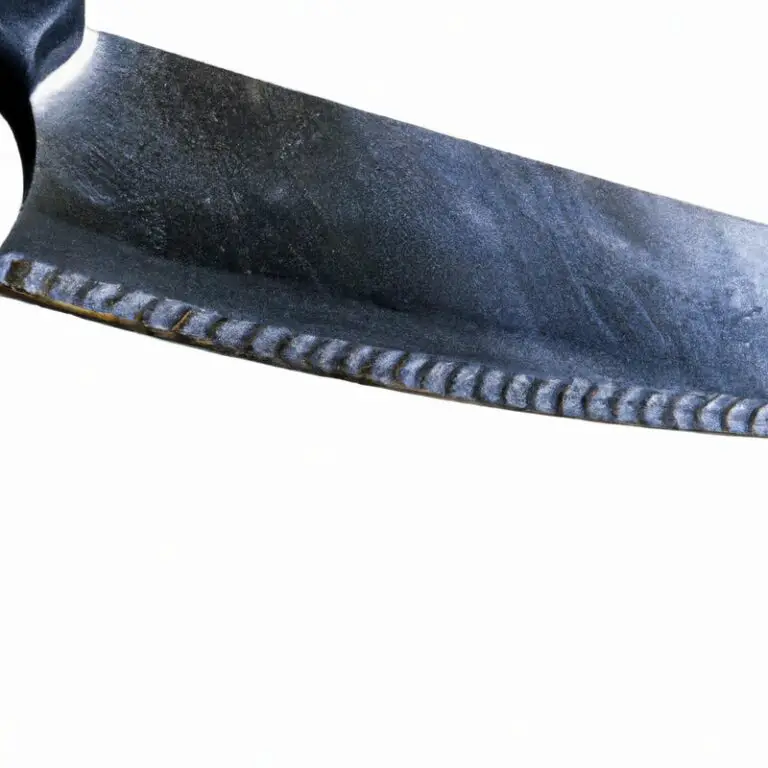How Can I Safely And Efficiently Cut Through a Layered Mille-Feuille Using a Serrated Knife?
Key Takeaways:
- Use a serrated knife with a long blade to ensure clean and precise cuts.
- Gently saw through the layers of the mille-feuille, applying minimal pressure to avoid crushing it.
- Chill the mille-feuille in the refrigerator before cutting to make it more stable and easier to slice.
- Clean the knife blade between each cut to prevent the layers from sticking and distorting the presentation.
Are you as fascinated by the delicate layers of a mille-feuille as I am? But when it comes to cutting through them without turning the whole thing into a crumbly mess, it can seem like a daunting task.
Fear not, because in this article, I’ll guide you through the art of safely and efficiently cutting a layered mille-feuille using a serrated knife.
From the basics of mille-feuille to the importance of safety, I’ll share my expert tips and techniques so you can impress your friends and family with symmetrical slices every time. So, grab your serrated knife and let’s dive in!
| Step | Description |
| Gather your tools | Ensure you have a serrated knife and a sturdy, stable cutting surface such as a cutting board or countertop. |
| Cut the sides | Start by using the serrated knife to score the sides of the mille-feuille, making shallow cuts from top to bottom. This will help guide your cuts and prevent the layers from sliding. |
| Apply gentle pressure | Hold the serrated knife with a firm grip and apply gentle pressure as you cut through the layers. Avoid pressing too hard, as this may cause the mille-feuille to crush or collapse. |
| Sawing motion | Use a back-and-forth sawing motion with the serrated knife to cut through the mille-feuille, rather than pressing straight down. This will help slice through the layers while minimizing the risk of damage. |
| Repeat as needed | Continue cutting with the serrated knife, working your way through each slice of the layered mille-feuille. Take your time and be patient to ensure clean, even cuts. |
| Clean the knife | Between each cut, wipe off any excess cream or filling from the serrated knife blade with a cloth or paper towel. This will prevent the layers from sticking to the knife and ensure a smoother cutting process. |
The Basics of Cutting a Layered Mille-Feuille
What is a layered mille-feuille?
A layered mille-feuille is a classic French pastry consisting of multiple layers of flaky puff pastry, filled with a variety of delicious ingredients such as cream, custard, fruit, or chocolate ganache. The name “mille-feuille” translates to “a thousand layers,” which perfectly describes the delicate and intricate nature of this dessert.
Its symmetrical design and rich flavors make it a popular choice for elegant occasions or simply as a special treat.
When properly cut, each slice reveals the beautiful layers and allows for easy enjoyment of the different components.
Why use a serrated knife?
A serrated knife is the best tool for cutting a layered mille-feuille due to its unique toothed edge. The serrations grip the delicate layers of pastry, preventing them from getting crushed or torn during the cutting process.
The sharpness and sawing motion of the serrated knife allow for clean and precise cuts, ensuring each layer stays intact.
Additionally, the serrated edge helps to maintain the overall structure of the mille-feuille, preventing the layers from shifting or sliding as you cut. So, when it comes to cutting a layered mille-feuille, a serrated knife is the way to go!
Importance of safety when using a serrated knife
Using a serrated knife requires careful attention to safety. The serrated blade can easily catch on objects, leading to accidents.
To ensure safety, always hold the knife with a firm grip and keep your fingers away from the blade.
Avoid applying excessive force when cutting, as this can cause the knife to slip. Keep the knife blade sharp, as a dull blade requires more effort and increases the risk of accidents.
Take your time and work in a well-lit area to avoid any mishaps.
Preparing to Cut
Gather the necessary tools
To safely and efficiently cut through a layered mille-feuille using a serrated knife, you’ll need a few key tools. First, make sure you have a sharp serrated knife.
Dull knives can crush the delicate layers instead of cleanly slicing through them.
Next, gather a ruler or straight edge to help mark your desired cuts. This will ensure even and precise portions.
Lastly, have a clean plate or cutting surface ready to transfer the cut mille-feuille onto.
With these tools in hand, you’ll be well prepared to tackle this delicious dessert!
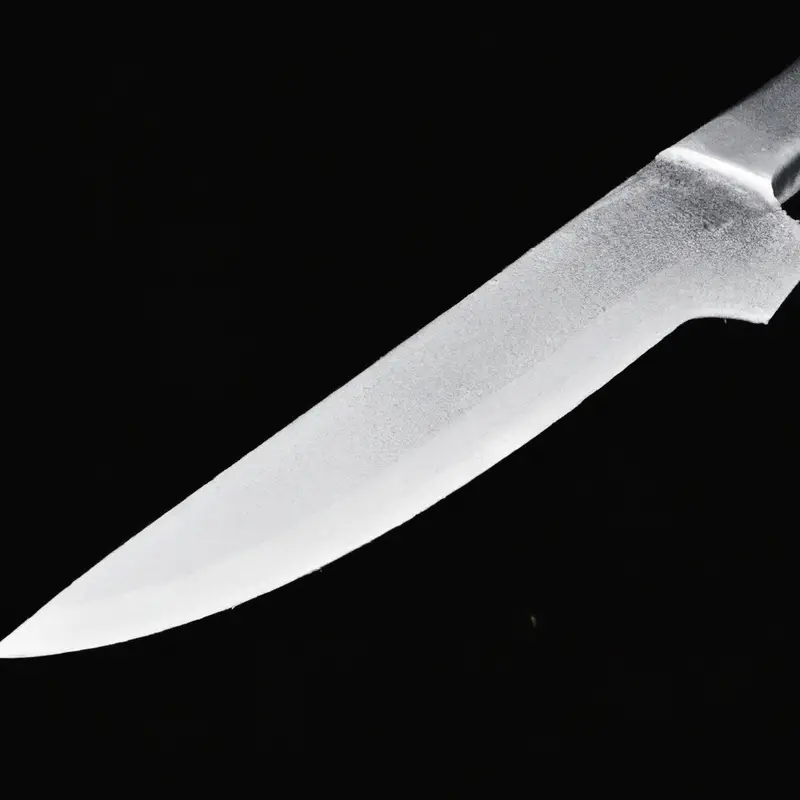
Chill the mille-feuille
Chilling the mille-feuille is an important step to ensure clean and precise cuts. By placing the assembled mille-feuille in the refrigerator for at least 1 hour, the layers of pastry and filling firm up, making it easier to cut through without causing them to collapse or become messy.
The chilled mille-feuille also retains its shape better, allowing for neater presentation on the plate.
So, don’t forget to chill your mille-feuille before slicing!
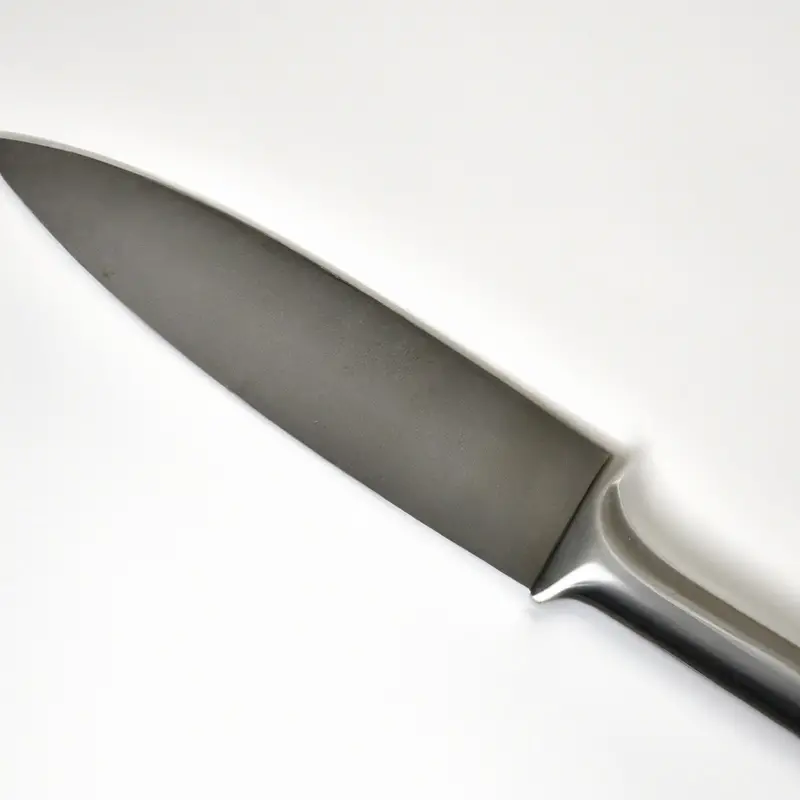
Sharpness of the serrated knife
The sharpness of the serrated knife is crucial when cutting through a layered mille-feuille. A sharp knife ensures clean and precise cuts without squishing or compressing the delicate layers of the pastry.
A dull knife, on the other hand, can make the cutting process challenging and may result in a messy presentation.
To ensure the sharpness of your serrated knife, regularly hone or sharpen the blade using a sharpening tool or a professional knife sharpener. Remember to exercise caution when handling and sharpening the knife to avoid accidents.
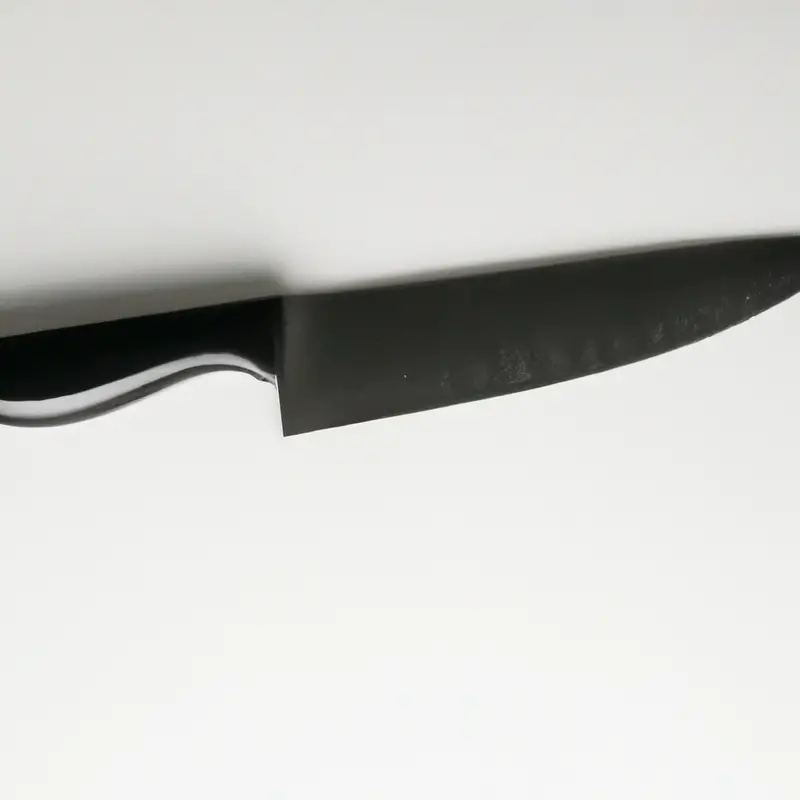
Cutting Techniques for a Layered Mille-Feuille
Marking the desired cuts
When marking the desired cuts on a layered mille-feuille, it is important to be precise. Use a ruler or straight-edge to measure and mark where you want the cuts to be made.
Take your time and ensure the marks are evenly spaced.
Lightly score the surface of the mille-feuille with a sharp knife, being careful not to cut all the way through. These scored lines will act as a guide when cutting the mille-feuille into individual portions.
Using a slow and gentle sawing motion
When cutting through a layered mille-feuille, using a slow and gentle sawing motion is key. This technique helps to prevent the delicate layers from getting crushed or compressed.
By sawing slowly and gently, you can maintain the integrity of the pastry and ensure clean, neat slices.
Remember to be patient and let the serrated knife do the work. Rushing or using force can result in a messy and uneven cut.
So take your time, apply light pressure, and enjoy your perfectly sliced mille-feuille.
Cleaning the knife between cuts
Cleaning the knife between cuts is essential to ensure precise and neat slices of your layered mille-feuille. Here’s how you can do it:
- Use a clean, damp cloth or paper towel to wipe off any crumbs or filling residue from the blade after each cut.
- It’s important to remove any excess filling or crumbs that may stick to the blade, as they can affect the quality of subsequent cuts.
- If the knife becomes sticky or coated with filling, rinse it under warm water and wipe it dry before making the next cut.
- Another option is to have a separate designated knife for each flavor or filling of mille-feuille to prevent flavor mixing.
Remember, keeping the knife clean and free from debris will help you achieve beautiful and uniform slices of your delicious layered dessert.
Tips for Safe and Efficient Cutting
Applying even pressure on the knife
When cutting through a layered mille-feuille with a serrated knife, it’s important to apply even pressure on the knife. This ensures a clean and precise cut.
To achieve this, hold the knife firmly but not too tightly.
Start at one end of the mille-feuille and use a slow, sawing motion. Apply consistent pressure as you move the knife through the layers.
Remember to maintain control and avoid rushing the process.
By applying even pressure, you’ll be able to slice through the mille-feuille smoothly and achieve neat, professional results.
Stabilizing the mille-feuille
To stabilize the mille-feuille and prevent it from sliding while cutting, there are a few simple steps you can take. First, make sure the mille-feuille is chilled thoroughly, as this will help firm up the layers and make them less likely to shift.
Additionally, using a serrated knife with a long blade can provide better stability and control.
When cutting, try to apply even pressure on the knife and use a gentle sawing motion. Lastly, consider placing your non-dominant hand on top of the mille-feuille to hold it in place while cutting.
These techniques will ensure a clean and stable cut through your delicious mille-feuille!
Presentation and Serving Suggestions
Plating the cut mille-feuille
Plating the cut mille-feuille is all about presentation and creating an appealing visual display. Here are some tips to help you plate it like a pro:
- Start by placing the cut mille-feuille on a clean and well-chosen plate or dessert platter.
- Arrange the layers neatly, making sure they are evenly spaced and visually appealing.
- Consider adding a garnish, such as a dusting of powdered sugar, a drizzle of chocolate sauce, or a sprig of mint, to enhance the overall look.
- If desired, you can also add a scoop of ice cream, a dollop of whipped cream, or a side of fresh fruit to complement the flavors of the mille-feuille.
- Finally, take a step back and assess the presentation before serving. Ensure that the plate is clean and any spills or smudges are wiped away for a flawless final result.
Remember, plating is an opportunity to showcase your creativity and attention to detail. Have fun with it and let your artistic side shine!
Options for garnishing
When it comes to garnishing your layered mille-feuille, there are several options to consider. Here are some ideas to elevate the presentation and add extra flavors:
- Dusting with powdered sugar: Sprinkle a light layer of powdered sugar over the top of the mille-feuille for a classic and elegant touch.
- Drizzling with chocolate or caramel sauce: Add a decadent touch by drizzling a rich chocolate or caramel sauce over the top, creating a beautiful design.
- Fresh fruit: Arrange slices of fresh fruit, such as strawberries, raspberries, or kiwi, on top of the mille-feuille for a burst of color and refreshing taste.
- Whipped cream: Dollop some fluffy whipped cream on each serving of mille-feuille for a creamy and indulgent addition.
- Edible flowers: Decorate the mille-feuille with edible flowers, like pansies or violets, to create a stunning and visually appealing dessert.
Remember, garnishing is all about personal preference and creativity. Feel free to experiment with different combinations of toppings to create your own unique masterpiece.
Recommended serving techniques
When serving a layered mille-feuille, there are a few techniques to keep in mind for a delicious and attractive presentation. Here are some recommended serving techniques:
- Use a sharp, serrated knife to cut clean and precise portions of the mille-feuille.
- Place each slice on a dessert plate or platter using a cake server or spatula to maintain its shape.
- Add a touch of elegance by dusting powdered sugar or cocoa powder over the top of each slice.
- Pair the mille-feuille with a side of fresh berries or a scoop of vanilla ice cream for added flavor and texture.
- To add a personal touch, drizzle a chocolate or fruit sauce over the plated mille-feuille.
Troubleshooting Common Issues
Preventing the layers from sliding
To prevent the layers of a mille-feuille from sliding, it’s essential to ensure that the filling is properly set and the pastry is sturdy. One way to achieve this is by refrigerating the mille-feuille for a sufficient amount of time before cutting.
Additionally, you can use a firm filling, such as stabilized whipped cream or pastry cream, that will hold the layers together.
Another tip is to apply gentle and even pressure when cutting, using a sharp serrated knife to minimize any sliding.
Handling uneven or tough layers
When dealing with uneven or tough layers in a mille-feuille, there are a few strategies you can try. First, make sure your serrated knife is sharp and clean.
This will help you cut through the layers more easily.
If you encounter a particularly tough layer, try using a gentle sawing motion with the knife, applying even pressure. If the layers are uneven, you can use a guiding tool, such as a ruler or a toothpick, to mark where you want to cut.
This will help you achieve more precise cuts and maintain the integrity of the layers.
Rescuing a collapsed mille-feuille
If your mille-feuille has collapsed, don’t worry! There are a couple of ways to rescue it. Firstly, you can try gently pressing the layers back together using your hands or a spatula.
If that doesn’t work, you can try cutting the collapsed mille-feuille into individual portions, and serving it as a deconstructed dessert.
Another option is to turn the collapsed mille-feuille into a trifle by layering the broken pieces with whipped cream and fruit. Remember, the taste will still be delicious, even if the presentation isn’t perfect!
Final Verdict
Cutting through a layered mille-feuille requires attention to detail, the right tools, and a careful technique. By using a serrated knife, you can achieve clean and precise cuts without ruining the delicate layers.
Safety should always be a priority, so make sure you have a stable surface and apply even pressure on the knife.
With the right preparation and practice, you can confidently present a perfectly sliced mille-feuille that will impress your guests. Remember, a sharp serrated knife is your best friend when it comes to achieving the perfect cut.
So go ahead, give it a try and enjoy the delicious results!

